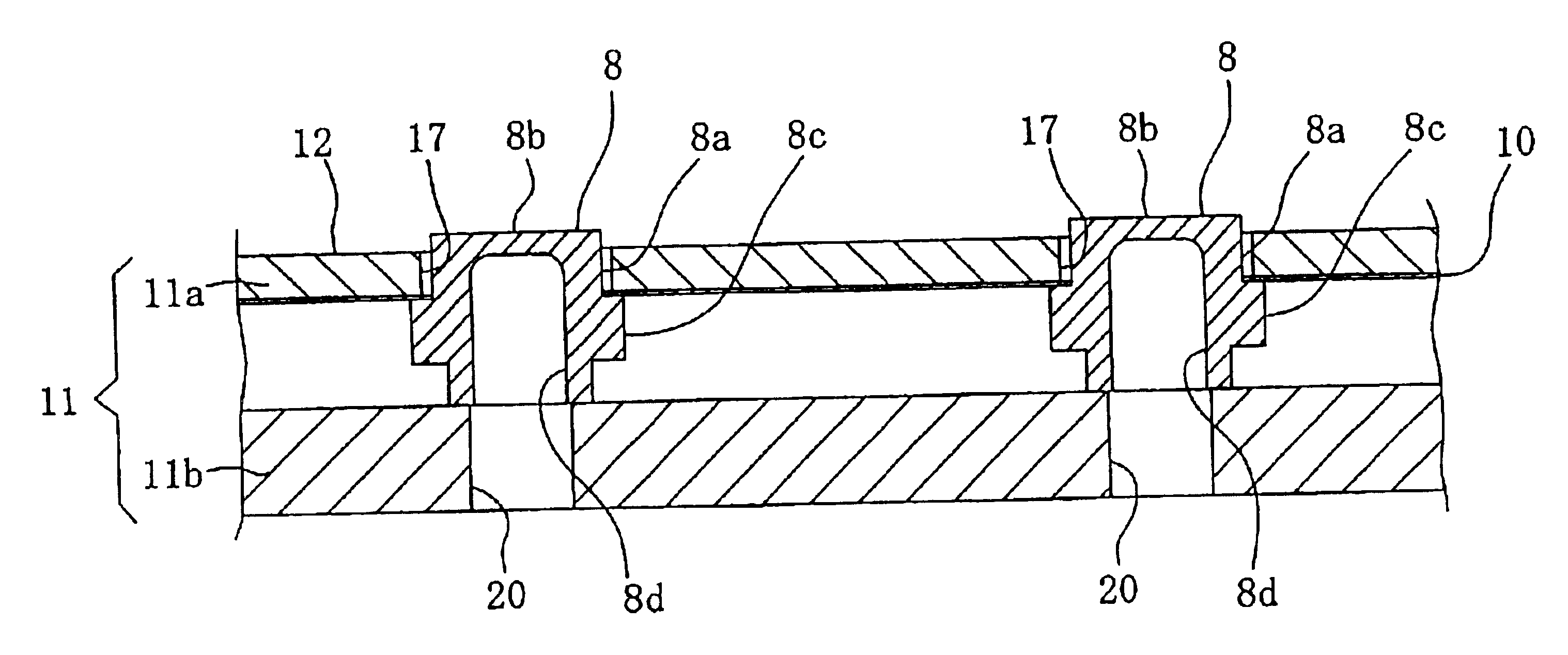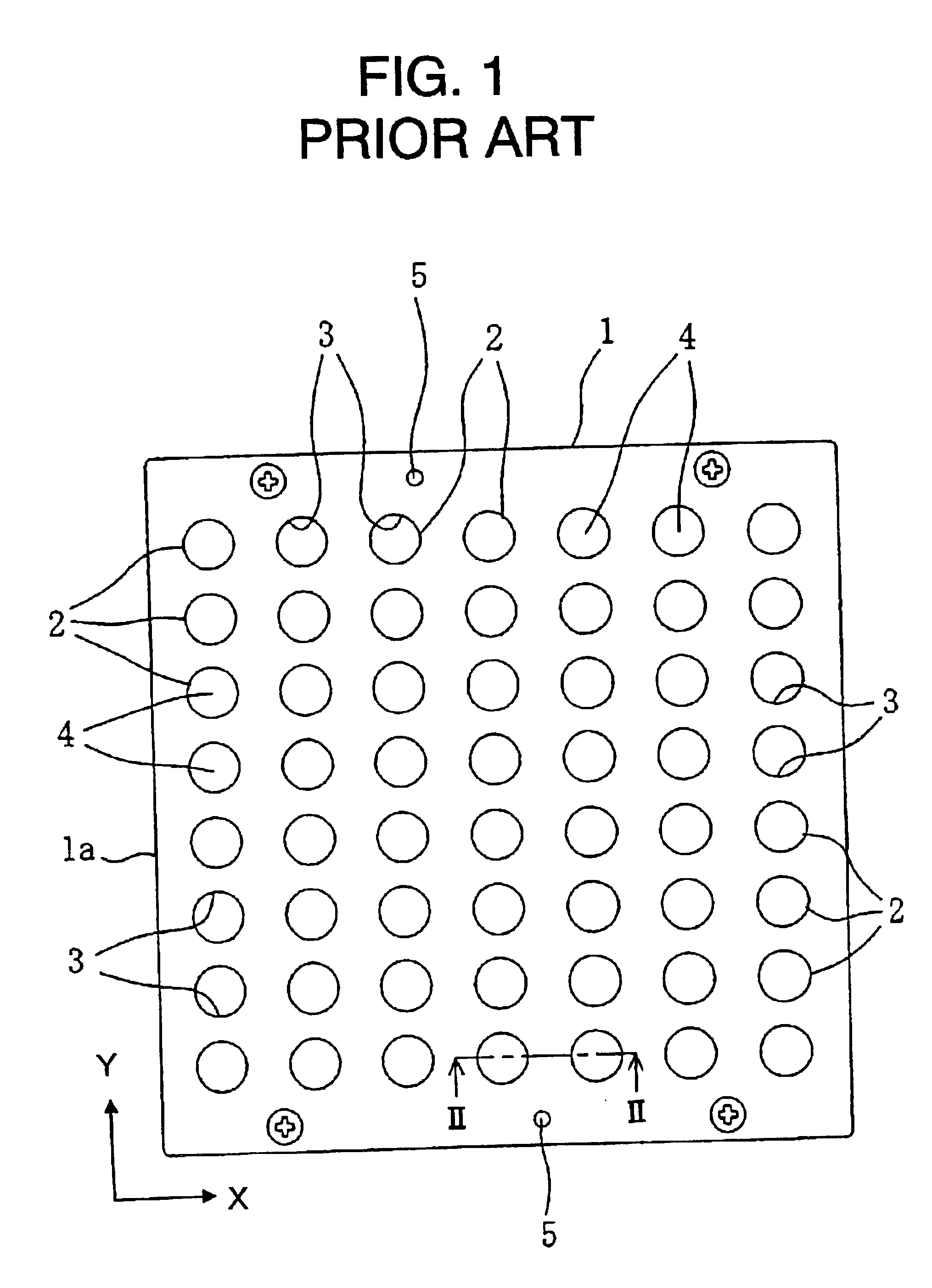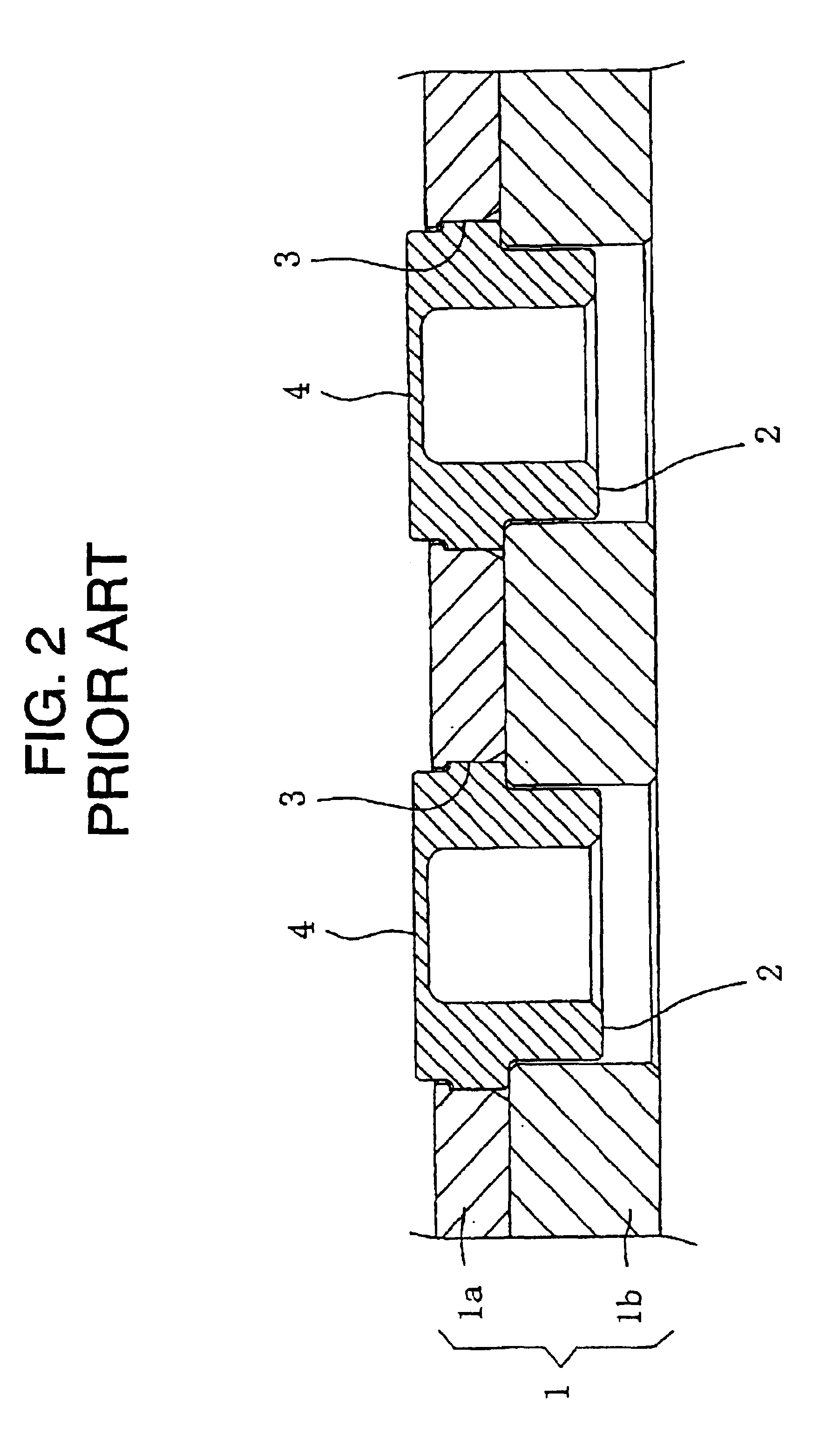Method of manufacturing strain-detecting devices
- Summary
- Abstract
- Description
- Claims
- Application Information
AI Technical Summary
Benefits of technology
Problems solved by technology
Method used
Image
Examples
Embodiment Construction
A preferred embodiment according to the present invention will now be described with reference to FIGS. 5 to 15.
First, strain-detecting devices manufactured by a manufacturing method of the present invention will be exemplified.
FIG. 5 exemplifies a strain-detecting device SG, which is equipped with a substrate 8 and a strain gage portion 9 formed on the substrate 8.
The substrate 8, which is formed into a single rigid body made of a given metal material, has a cylindrical pillar 8a having both ends in its axial direction. As shown in FIGS. 5 and 6, one end is integrally closed with a thin plate, while the other end is opened. The part of the thin plate functions as a diaphragm 8b.
Further, a cavity (bottomed opening) 8d with an aperture at one end is formed in the cylindrical pillar 8a. When fluid is administered into the cavity 8d as illustrated by an arrow A in FIG. 5, the pressure of the fluid acts on the back of the diaphragm 8b, thereby causing the diaphragm 8b to be deformed. A...
PUM
| Property | Measurement | Unit |
|---|---|---|
| Time | aaaaa | aaaaa |
| Thickness | aaaaa | aaaaa |
| Level | aaaaa | aaaaa |
Abstract
Description
Claims
Application Information
 Login to View More
Login to View More - R&D
- Intellectual Property
- Life Sciences
- Materials
- Tech Scout
- Unparalleled Data Quality
- Higher Quality Content
- 60% Fewer Hallucinations
Browse by: Latest US Patents, China's latest patents, Technical Efficacy Thesaurus, Application Domain, Technology Topic, Popular Technical Reports.
© 2025 PatSnap. All rights reserved.Legal|Privacy policy|Modern Slavery Act Transparency Statement|Sitemap|About US| Contact US: help@patsnap.com



